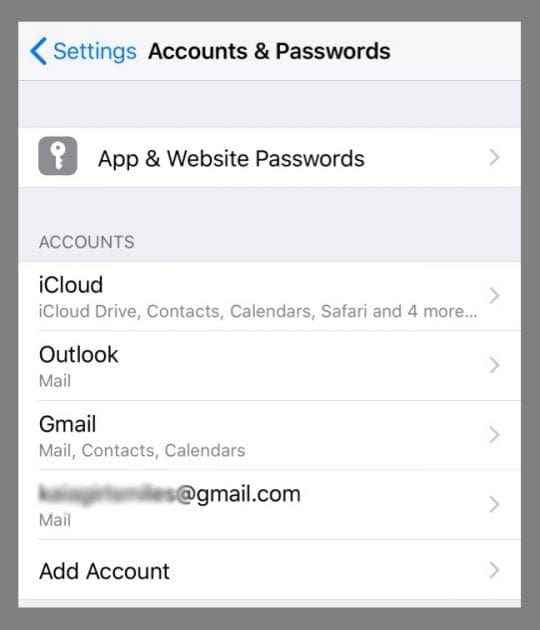
- #ICLOUD OUTLOOK ADD IN INACTIVE HOW TO#
- #ICLOUD OUTLOOK ADD IN INACTIVE UPDATE#
- #ICLOUD OUTLOOK ADD IN INACTIVE PASSWORD#
Disabling unneeded add-ins can actually speed up Outlook as well. Note 2: You certainly do not need to have all add-ins enabled for Outlook to work properly. Note 1: See this post if you get the error “The connected state of Office Add-Ins registered in HKEY_LOCAL_MACHINE cannot be changed.”.
#ICLOUD OUTLOOK ADD IN INACTIVE HOW TO#
Note: If and add-in is already disabled you will find instructions on how to re-enable a disabled Outlook add-in here. In some case, it is not the fault of the disabled add-in. An IMAP backup tool is the best alternative. Outlook sometimes disables add-ins if it believes that an add-in is interfering with Outlook's functionality.

#ICLOUD OUTLOOK ADD IN INACTIVE PASSWORD#
Copy this password (without the spaces) and enter this password when Outlook prompts you for a password.You can enable/disable add-ins in the following way Outlook 2007 In the Security section, under APP-SPECIFIC PASSWORDS, select Generate Password.Įnter a name for your password, such as Outlook, and select Create.Īpple will display an app password for you. Otherwise, turn on two-factor authentication.
#ICLOUD OUTLOOK ADD IN INACTIVE UPDATE#
If you've already turned on two-factor authentication, you'll receive a code on one of your devices. After the last icloud update the refresh icloud button disapearded from my outlook and it will no longer sync my contacts and claender items. Go to the Apple ID website from your browser and enter your Apple ID and password. If the iCloud Add-in is listed under Inactive or Disabled Add-ins, make sure Com Add-ins is selected in the drop-down. To obtain an app password for your iCloud email account, use the following steps: Please sign in using your application password. I am not sure if this is the reason in your case but it could also give you some direction to think of. some time when Outlook shuts down abruptly or user forcefully shut down the Outlook, add-In gets disabled. One way you'll know you need an app password is if you see the following message: 2-factor authentication is set up for your account. I am also working on Outlook Add-In and I know one reason when the Add-In gets disabled. This is a different password than your regular email account password. To add your email account to Outlook, you’ll need an app password, also known as an application password. Gmail, Yahoo, iCloud, , and AOL accounts all use two-factor authentication to help verify that you’re the person trying to access your email account. If Outlook won’t accept your password and you know you’re using the password for your email account, you might have an email account that requires additional security. Select the iCloud account you are having issues with and remove it. If the iCloud Add-in is listed uner Inactive or.

Look at the list of add-ins in the Active Application Add-ins section. If you encounter an issue where the gSyncit Outlook add-in keeps being reset to inactive/disabled each time you start Outlook then take the following steps to remove the Outlook add-in settings for the current user and use the default system add-in settings.

Click Add-ins in the left panel of the Outlook Options window. Follow these steps in Outlook 2010 and later to check and turn on the Add-in: Select the File menu. o Use the Manage button at the bottom to move the iCloud’ Add-in to the Inactive’ section and then to the Active. The iCloud Outlook Add-in transfers your content between iCloud and Outlook. The steps to handle disabled or inactive add-ins are different. (user the scroll bar on the right to go down the list). Some users have noticed their Outlook Add-in were automatically disabled or 'disappeared' from the Outlook. (pardon) o I found it under the Disabled Application Add-ins section. Go to File > Account Setting drop down > Account Settings. Look for iCloud Outlook Add-in o If this is under the Active Application Add-ins section, then I am sorry you are screwed. If prompted, enter your password again, then select OK > Finish to start using your email account in Outlook. Go to File >Options > Add-Ins > Click 'GO' at the Manage: COM Add-in, select the iCloud Outlook Add-in and hit Remove >OK. These steps are the same whether you're adding your first email account or additional email accounts to Outlook.Įnter your email address and click Connect.Įnter your name, email address, and password, and click Next.


 0 kommentar(er)
0 kommentar(er)
